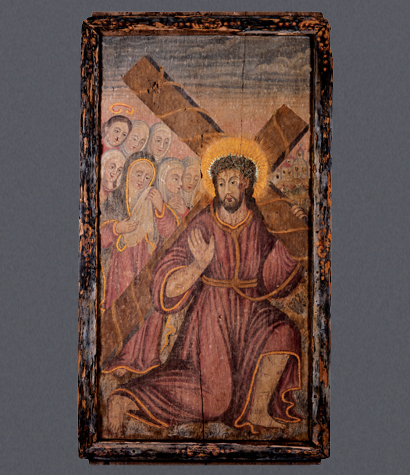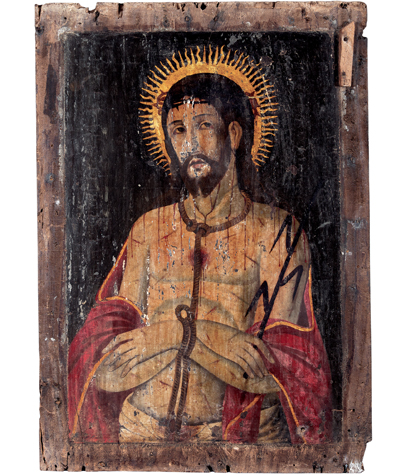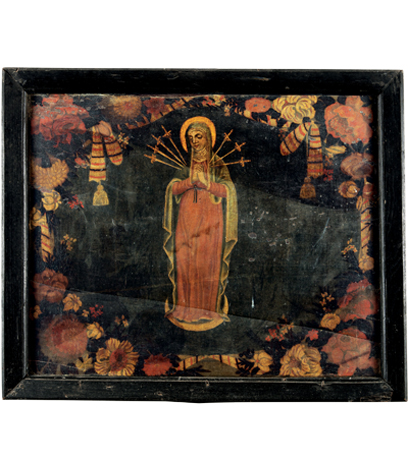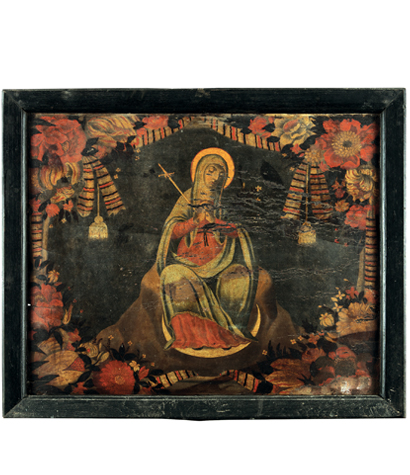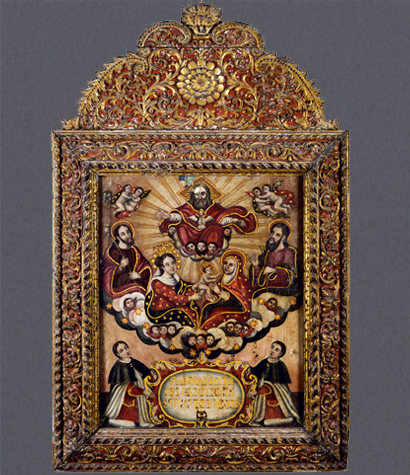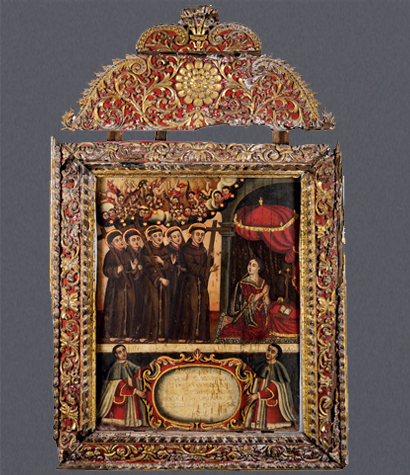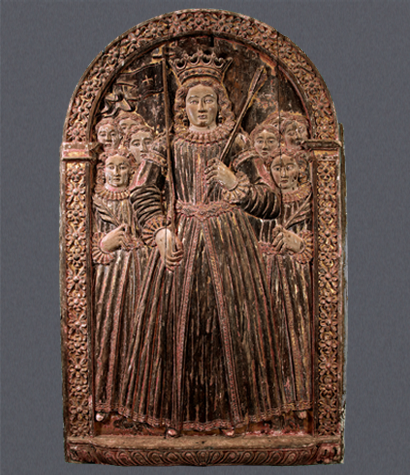
St. Ursula (d. 383 CE), of royal British descent, was a Christian saint of whom little is known except through legend. Her journey to Europe to marry a Gaulish governor ended with her being killed, along with her companions, by Hun invaders in Cologne. The cult of St. Ursula and the eleven thousand virgins gained great currency in the second half of the 16th century, being promoted by the Portuguese crown, and also spreading to overseas holdings, primarily as a result of Jesuit activity. It thus became customary by mid-17th century for most Jesuit churches to have an altar dedicated to this saint. This large polychrome wooden bas-relief carving of St. Ursula is also likely to have formed a magnificent altarpiece background.
Dating to the early 17th century, it shows a resolute Ursula, surrounded by her handmaidens, carrying an arrow, her attribute, for that was how she and the others met their death. Her companions carry palm-leaf fronds to symbolize their martyrdom. Being of royal origin, St. Ursula wears a crown and mantle, and carries a cross-bearing flag that flutters free. The expressive faces with their curling locks, hands carrying various objects, robes with cuffs, ruffs and jewelled waistbands, and crown are all intricately carved and highlighted in gold. The rich frame is also gilded, and carries a floral frieze whose design allows us to date the bas-relief to the early 17th century.
REFERENCES
Maria Cristina Osswald, “The Society of Jesus and the diffusion of the Cult and Iconography of Saint Ursula and the Eleven Thousand Virgins in the Portuguese Empire during the Second Half of the 16th century,” Via Spiritus: Revista de história da Espiritualidade e do Sentimento Religioso 12 (2005): 601-9. http://bit.ly/39VAjKk
PUBLICATIONS
Museum of Christian Art, Convent of Santa Monica, Goa, India, Calouste Gulbenkian Foundation, Lisbon, 2011.

